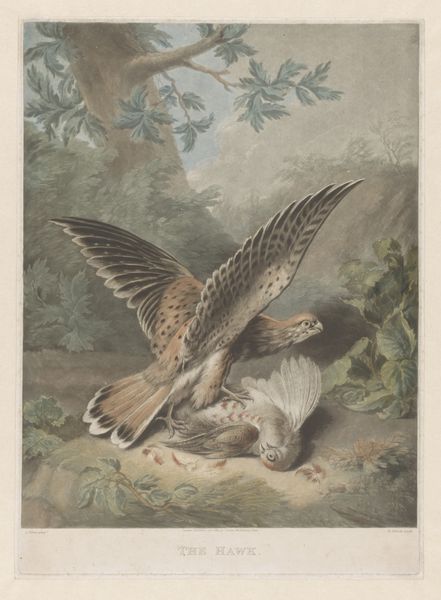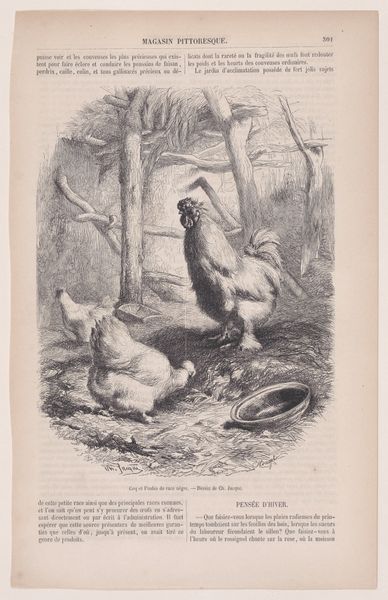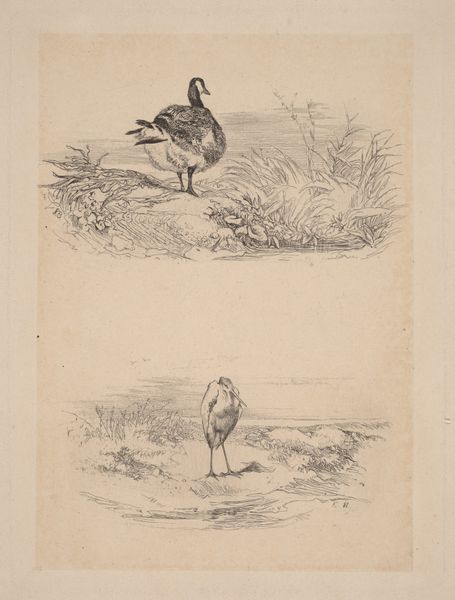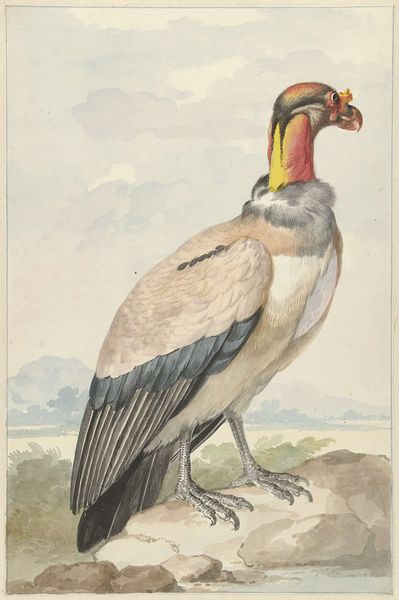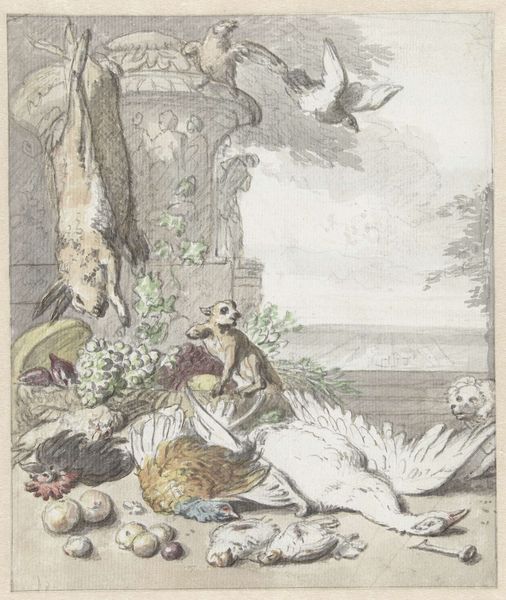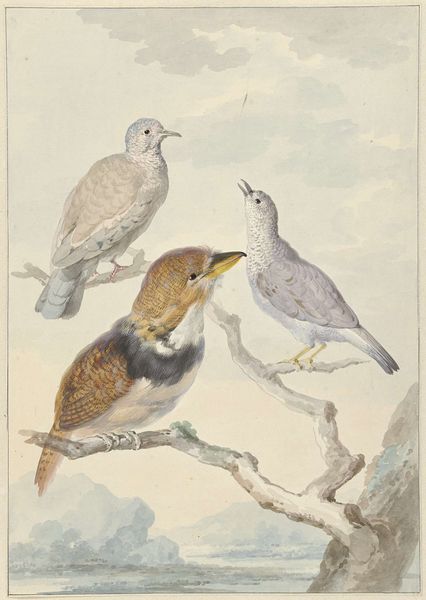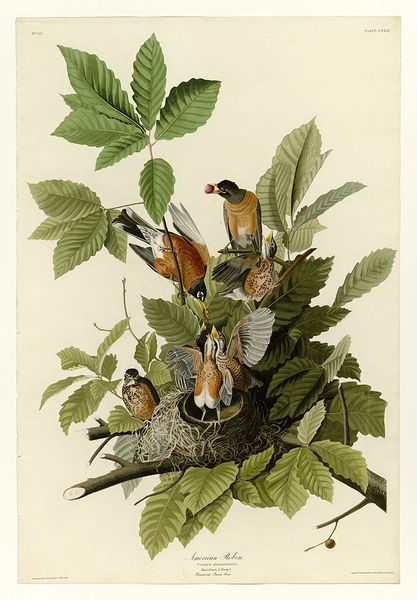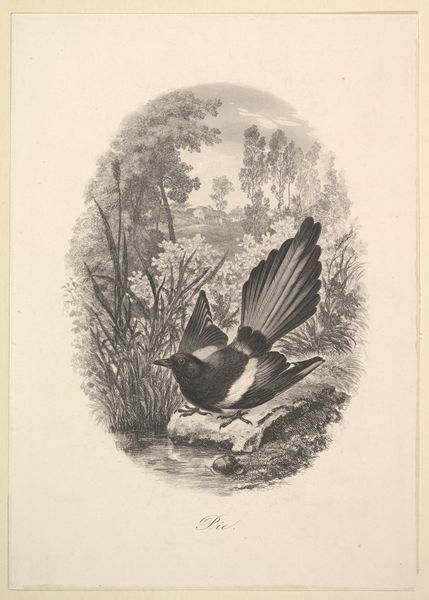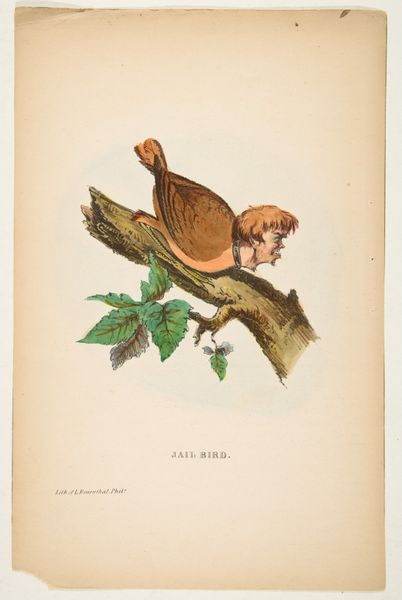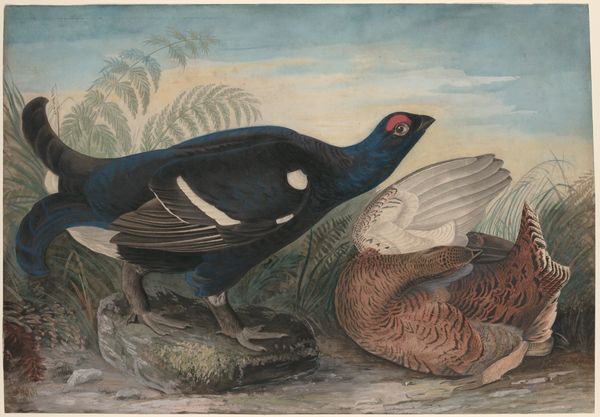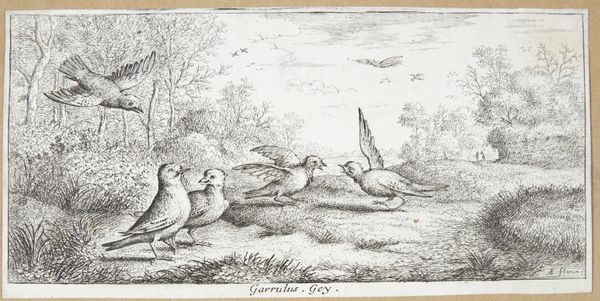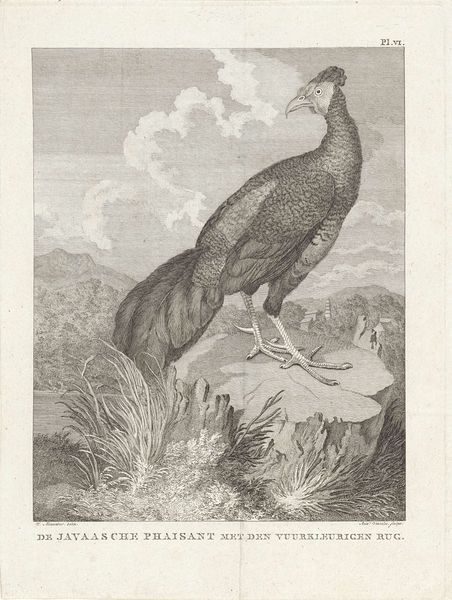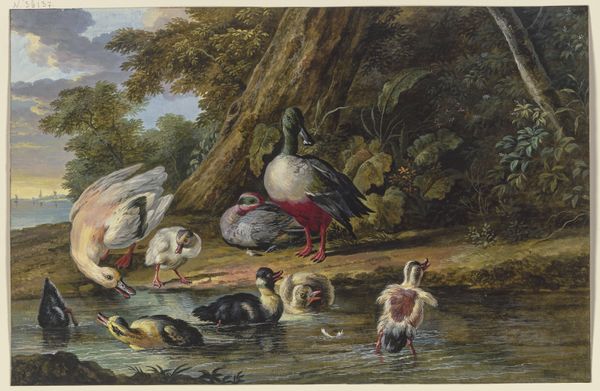
painting, watercolor
#
animal
#
painting
#
dog
#
landscape
#
watercolor
#
coloured pencil
#
genre-painting
#
watercolor
Dimensions: height 264 mm, width 202 mm
Copyright: Rijks Museum: Open Domain
Editor: Here we have Wybrand Hendriks' "Hunting Dog Catches a Duck," created sometime between 1754 and 1831. It’s a watercolor painting, and it strikes me as a pretty brutal scene, but also very dynamic. What stands out to you? Curator: Immediately, I’m struck by the symbolism inherent in the predator-prey relationship depicted. Think about the duck. Throughout history, waterfowl have been associated with transition and journeys – the soul’s journey, perhaps. Now, consider the dog. Often a symbol of loyalty and servitude. The clash, or in this case, capture, becomes more than just a hunt, doesn't it? Editor: So, it's about more than just a dog catching a duck? More like…a change? Curator: Potentially, yes. Or even forced servitude, duty overpowering the free spirit, that journeying soul. But the scene isn't entirely without nuance, notice how the landscape envelops them. The dense foliage… Editor: Right, it almost feels like the landscape is a silent witness to this capture, blending sympathy and indifferience. Does the choice of watercolor contribute to this feeling? It's less imposing than, say, oil paint. Curator: Precisely. Watercolor lends itself to capturing fleeting moments and subtle emotional shifts. Its transparency and delicacy add to the emotional complexity, contrasting with the violence. Think of it in psychological terms – the conscious act of dominance obscuring a more subtle, underlying narrative. What lasting impression do you feel it leaves you with? Editor: I’m left considering the dualities—loyalty and freedom, violence and beauty. Thanks, I wouldn't have noticed these layers without your insight! Curator: And I am reminded how powerfully such commonplace scenes embed lasting values and cultural tensions. Thank you for these insights.
Comments
No comments
Be the first to comment and join the conversation on the ultimate creative platform.

